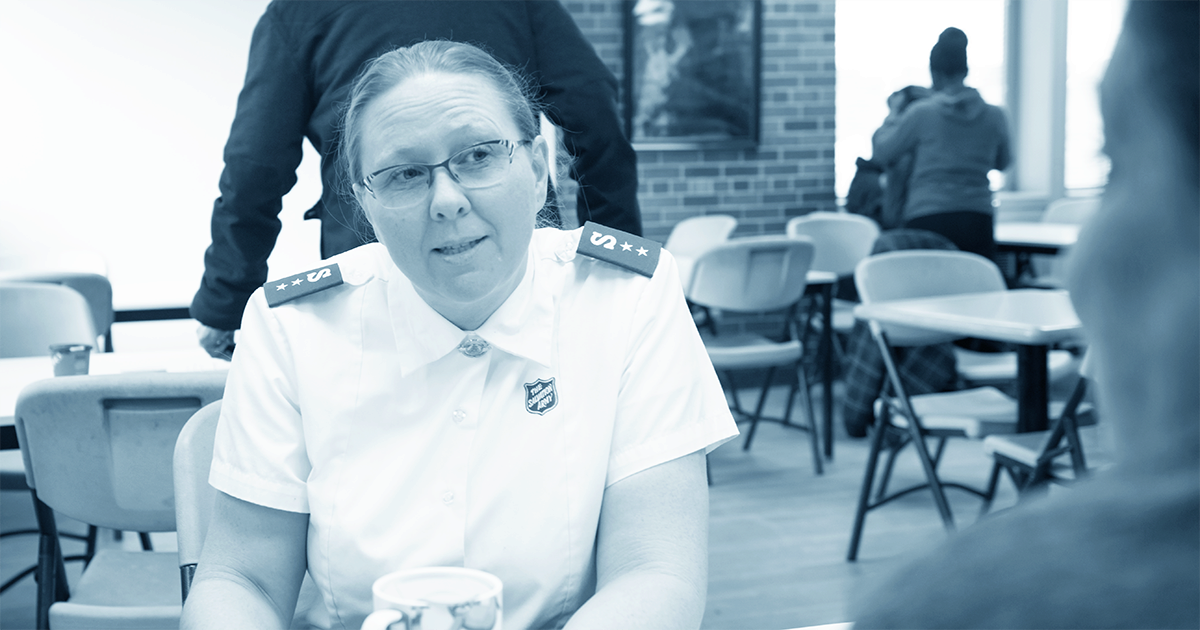
REPORT & RECOMMENDATIONS
General Brian Peddle made a commitment to re-energizing The Salvation Army’s focus on gender equity as a spiritual imperative in regard to God’s value of all those who he calls into ministry. This document is a call to action for the Canada and Bermuda Territory to follow through on this commitment. The recommendations shared in this document are grounded in theology, built on previous Salvationist gender equity work, based on the lived experience of women officers in the territory, and guided by gender equity best practices and current research.
The report and recommendations content is the basis of the gender equity continuous improvement plan and can be subject to change.
Click here to download the final report of the gender equity task force.
![]()
Next Steps
An intentional accountability structure that signals commitment to and ownership of a gender-equity strategy.
In order for a gender-inclusive culture to come to life and stay alive, there needs to be a bottom-up and a top-down approach. The ongoing work should be led by a diverse cross-organizational working group, with participation and sponsorship from the most senior leadership. Without executive-level support, these networks may not last or scale. Critical requirements include senior-level sponsorship and commitment. When senior leaders model awareness of gender equity (and other EDJI work), it sends a powerful message about the importance of this work. Visible, dedicated support and structure with authority and budget must be set up to effectively implement the gender-equity strategy and recommendations.
Specific recommended actions include:
E1. That governance for accountability for the development and implementation of this strategy sit with the highest decision-making level within the organization, namely the Spiritual and Denominational Affairs Board.
E2. That a cross-organizational project group responsible for the development and implementation of the strategy be set up, chaired by a Territorial Leader.
E3. That Governing Council, and all subsidiaries, have equitable female representation.
E4. That the championing of gender equity be included as a formal responsibility with the function of ensuring a gender-equity lens is applied when appointing representatives to all territorial and divisional boards/committees. That evaluation may or may not include a representative number or percentage but should be based upon other factors to ensure equitable and independent voice/power.1
E5. That diversity networks exist that provide supportive spaces (resource groups) for women to share their experience and inform ongoing procedures and processes.
E6. That the Army develop measures to track progress, including numerical goals, as well as measures of inclusion and belonging.
E7. That a working group be assembled, under the leadership of the Territorial Gender Equity Advocate, tasked with the work of supporting the implementation of any and all approved recommendations.
________
[1] Although many committees/councils/boards look to have equal female representation, in some instances in the organization, due to the nature of appointing married couples as “leaders together,” the husband most often acts as the one with authority and the distribution of power/authority is not functionally equal. That nullifies a numerical/percentage measurement as bringing true equity. Equity ought to be based on independently owned decision-making power around the table.
Conclusion
The challenge has been placed before this territory to advance the cause of gender equity in order to make up significant ground that has been lost over the years. This work is not easy, nor is it fast. It will surface paradoxes that will challenge us in our comfort of the way things are, while being asked to lean into discomfort and be open to change. It requires safety in our interactions with each other, permission to challenge the status quo and the ability to see opposing views as varying and normal manifestations of diversity dynamics in organizations and societies and the practice of inclusion itself.2
General Peddle has identified a priority for gender equity that is firmly placed in his conviction that this is the will of God for us. “I believe this is God’s Army—not mine, not yours! The closer it reflects his nature, his character and his teaching, the more his rich blessing will be poured out on us. I believe we are in the middle of understanding our stewardship responsibility for his Army. As I carry a portion of that, I call upon leaders and each colleague officer to do what is right in God’s eyes and, ultimately, bring honour and glory to him. Enough talk—let’s do it!”3
________
[2] Ferdman, B.M. Paradoxes of Inclusion: Understanding and Managing the Tensions of Diversity and Multiculturalism. The Journal of Applied Behavioral Science. 2017;53(2):235-263.
[3] Ibid









